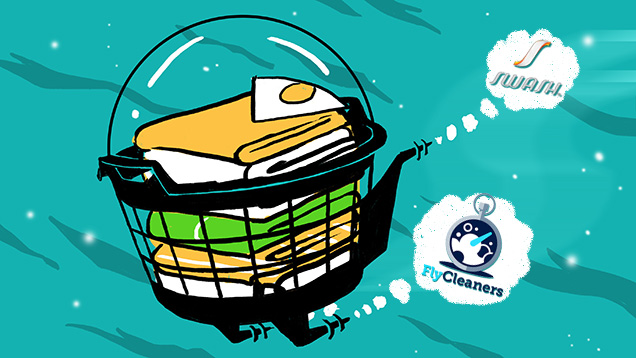I hate doing laundry. I hate stuffing the musky-smelling threads into a machine. I hate pouring in the soap. I hate folding it, when it’s done. I hate the whole dance. So when I heard about two major innovations in the laundry-doing arena, I got excited — perhaps a little too excited.
One of the innovations is a new product, and the other is a service. The former, recently announced by Whirlpool, is called the Swash; it’s a cabinet-sized appliance that’s straight out of The Jetsons. Basically, you put your clothes inside the machine, insert a canister of good-smelling stuff, and press a button to freshen up your clothes in ten minutes.
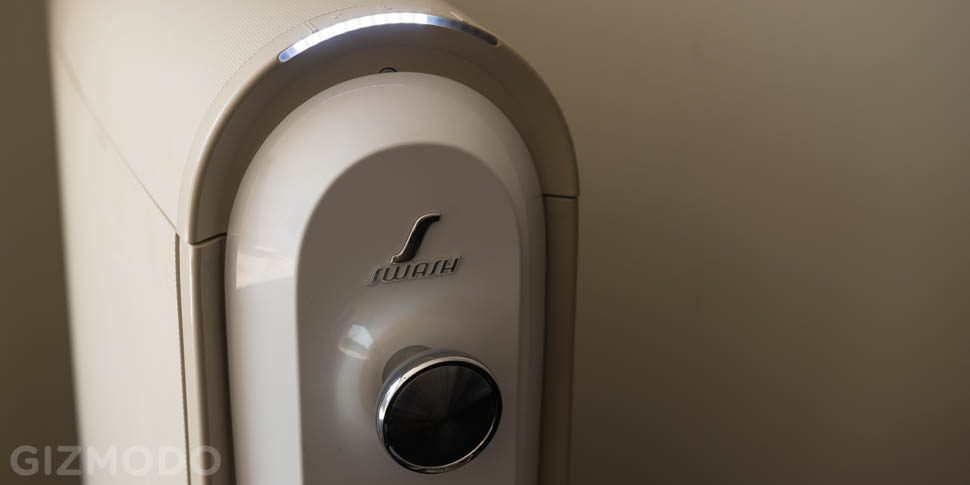
The other innovation is a new, on-demand laundry service called FlyCleaners. Currently available only in New York City, this smartphone app-powered business will pick up your dirty laundry and/or dry cleaning, send it to the laundromat and drop everything back off when you’re done. It’s not much more expensive than what you’d pay for wash-and-fold service, but you don’t have to leave the comfort of your apartment.
Both Swash and FlyCleaners sound too good to be true. Unfortunately, both of them are, in their own special ways.
The Experiment
In an attempt to curb my enthusiasm for these two wonderful-sounding things, I did what any half decent tech blogger would do: conducted an experiment with a crumpled suit and shirt from my closet. First, I ran everything through the Swash. Then, I stuffed it back in a bag for a good re-crumpling and sent it off to FlyCleaners for the basic treatment.
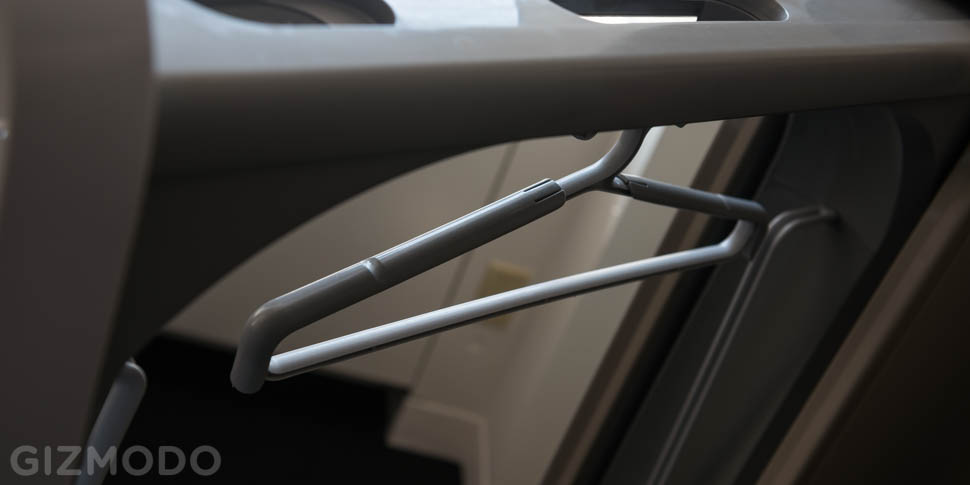
My thesis — and I didn’t really have to think twice about it — was that FlyCleaners would produce a sharper suit and shirt. That doesn’t mean that I expected the Swash to fail. I just felt like the Swash’s promise that I could “say goodbye to excessive washing, drying, steaming, ironing, and dry-cleaning and say hello to living life unhampered” seemed to over-promise.
That said, I kept my expectations low. The Swash is not designed to replace washing and dry cleaning completely, so I kept the focus on clothing care. I specifically wanted to know if the appliance worked well enough to replace ironing, which is the one thing I hate more than laundry. So when it came down to it, I judged the final outcome based on looks (read: wrinkles).
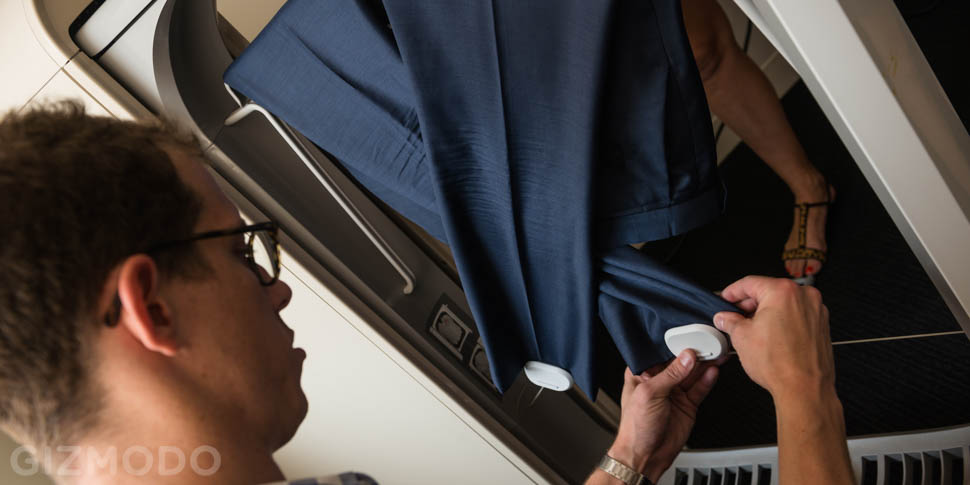
First Contender: The Whirlpool Swash
Like I said before, the Swash is like an appliance you’d find in the Jetsons‘ home. The device costs $US500, plus however much you end up spending on the freshening agent that comes in little packs called Swash Pods, which cost $US7 for a dozen. It’s the machine-powered, hassle-free future we were promised, though it’s not meant to be a complete replacement for dry cleaning. Rather, it’s a clothes freshener and wrinkle improver.
Still, when I travelled up to Midtown for a demo, wrinkled suit in tow, I expected life-changing results. A little fresher and a wrinkle-free is about as much as I’d ever hope for. The Jetsons, however, is a cartoon, and it’s silly to expect things in the real world to work as well as they do in the imaginations of animators.
The Swash is easy to use. A drawer-like rack equipped with one or two hangers slides out of the cabinet. All you have to do is hang your article of clothing on the hanger, stretch it with some (sort of awkward) clips that stretch out of the frame, and then close the drawer again. Then, you insert a so-called Swash Pod — it’s basically a Febreeze-like liquid in a sealed cup — pick a 10 or 15-minute cycle, and press start.
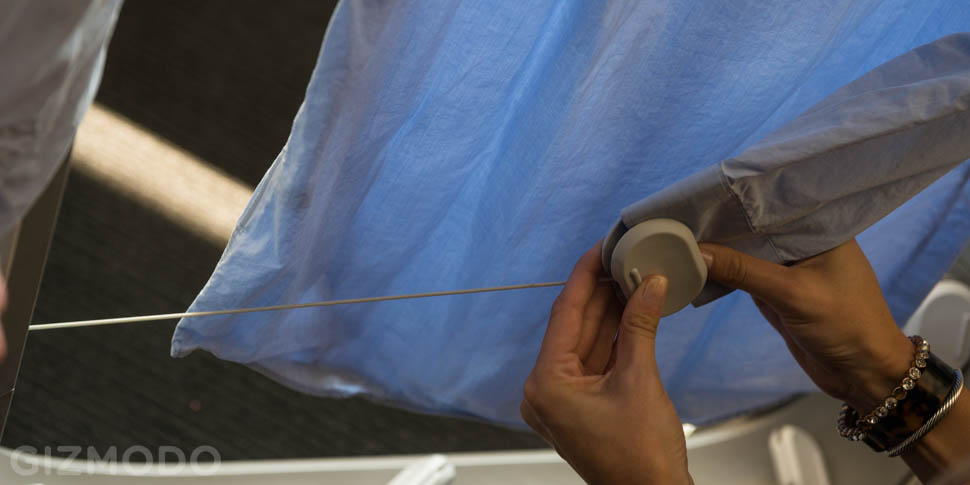
The whole workflow would clearly fit into any morning routine rather nicely. Imagine waking up and sticking your blazer and pants into the Swash before hopping in the shower. When you get out, the Swash cycle will be complete, and your suit will be warm, fresh, and pressed. At least, that’s the sales pitch Swash’s PR team gave me. I’m fairly convinced that 90 per cent of the process would work exactly as they described. That last 10 per cent is the really important part, though.
When I opened the drawer after the first cycle after 10 minutes, my shoulders shrugged a bit. I’d loaded the Swash with a wrinkled and admittedly finicky shirt, but I honestly couldn’t tell the difference between the pre-Swash shirt and the post-Swash shirt. Sure, it was warmer and smelled nicer than before. But it remained too wrinkled to wear.
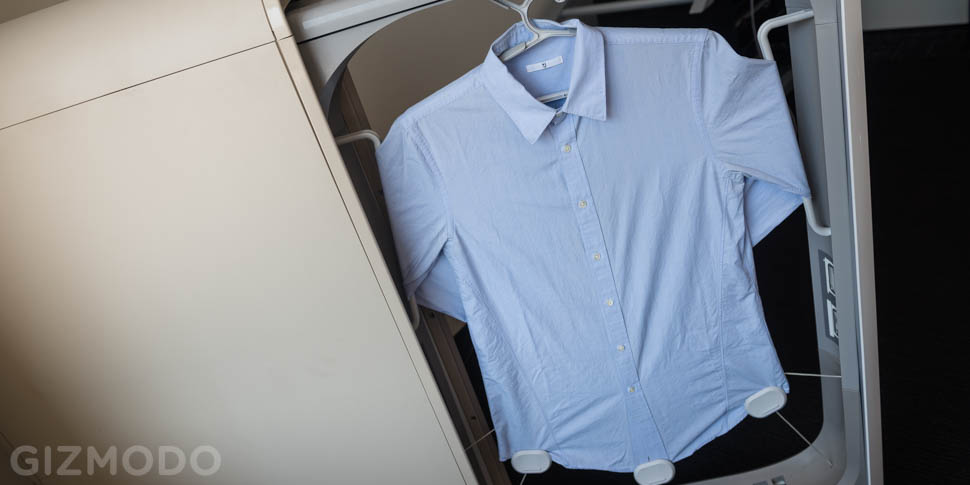
The suit fared better. While putting in two articles of clothing at a time isn’t recommended, the fact that each Swash cycle takes either 10 or 15 minutes means that you’ll probably have to cut some corners on busy mornings. The blazer and dress pants that I loaded into the machine for the second cycle came out looking pretty great. Some wrinkles remained in the elbow and knee area, but I definitely felt like the Swash did good work. I also think it helped that I ran the 15-minute-long cycle this time. Ultimately, the appliance handled the lightweight wool suit fabric better than the winter-weight cotton shirt fabric.
My preliminary conclusion so far lined up with my hypothesis: Swash is a neat idea, but it’s certainly not a silver bullet when it comes to clothing care.

Second Contender: FlyCleaners
This thing sounds like a trick. No seriously, when my roommate first told me about a startup that would come to your door, pick up both your regular laundry and your dry cleaning, and return it fresh in less than 24 hours, I thought it must be a scam. You’d expect that kind of service in a five-star hotel, not Brooklyn.
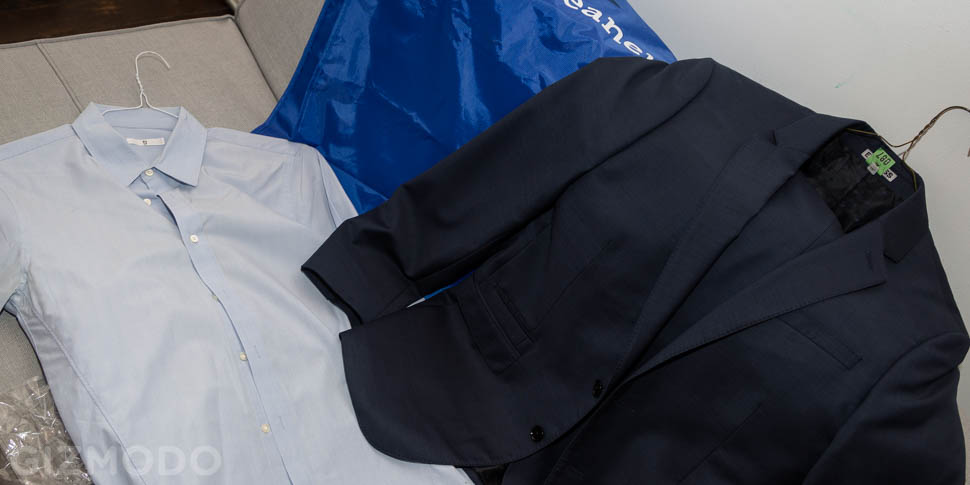
But it all worked as advertised — for the most part. Last Saturday, I downloaded the FlyCleaners app, tapped through a few easy set up screens, and ten minutes later, a friendly fellow with a laundry bag appeared at my door. I handed over a tote bag with the shirt and suit stuffed inside — I left them like that for a week so they’d get good and wrinkled — and he said they’d be ready by Monday. All I had to do to schedule a delivery was go into the app and tap a button.
Two days later, I was ready for my delivery. I opened the app and looked for the button. But it didn’t look like my order was finished. In fact, it didn’t even look like the cleaning process had started, as the handy progress bar was completely empty. That didn’t seem right, but I shrugged it off. In retrospect, I should have called Fly Cleaners, because something was clearly wrong. I didn’t pay a premium price to go chasing down my dry cleaning, though. Fly Cleaners was supposed to pick them up and magically deliver them without any effort on my part. That was the whole point.
The next day I went back to the app. Same thing. I really needed the clothes back at this point, so I fired off a strongly worded email to the support team, my only contact option given. They responded within a couple of hours, which would have been an eternity if I was, say, late for a wedding. The support line informed me that my order was indeed ready for pick-up, despite what the progress bar said and instructed me to log out of the app and then back in to schedule their return.
This was pretty annoying. You’d think that an app-based service would make sure its app was free of bugs before letting customers use it. The next available appointment that was available to schedule was, annoyingly, 7am the next morning.
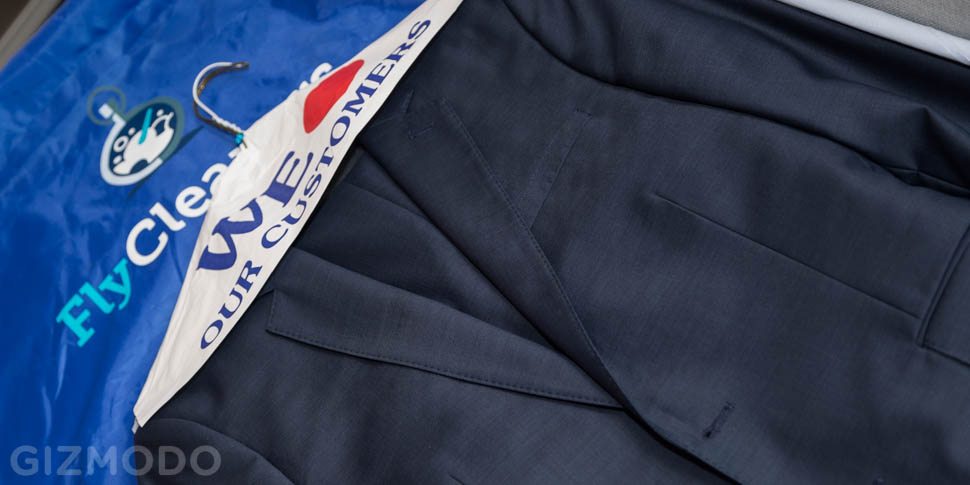
At 7:01am, I got a call from FlyCleaners. They were at my door with my laundry. App bugs aside, the extent to which this felt like concierge-calibre was kind of neat. The dry cleaning came in a surprisingly sturdy blue nylon garment bag bearing the FlyCleaners logo, and inside, everything looked ok. The shirt, I must admit, was still a tiny bit wrinkly — I told you the fabric was finicky! — but the suit looked great. All things told, the bill came to $US17.50. I did end up paying a little more for convenience that wasn’t all that convenient, but maybe it was just bad luck.
And the Winner Is…
So let’s talk pros and cons. The Swash is a hulking machine that does a decent job freshening up your clothes but doesn’t really replace laundering them. However, if you’re someone who regularly sends clothes to the cleaners just to get them freshened up, it will probably save you money in the long run.
The Swash sounds like a great idea, but the machine itself has its limitations. In my experiment, the Swash handled lighter weight wool fabrics pretty well but struggled with serious wrinkles. Since there’s no water involved, it would probably excel at freshening up delicates like silk and wool. However, don’t expect this rather large appliance to replace your iron any time soon. It’s more like a giant steamer.
FlyCleaners, meanwhile, is a full-on cleaning service that promises convenient, on-demand picks ups and deliveries. While the company did a good job cleaning my clothes, they really dropped the ball on the convenience piece. It wasn’t just the app bug that failed to tell me when my laundry was ready, either. It really would have been great to speak to a human voice when I had a problem.
All that said, FlyCleaners wins our future of laundry competition, because it actually gets your clothes clean and properly pressed — even if you do have to wait a bit longer, and may have a hard time getting them back.

This little Swash vs. FlyCleaners experiment did help me appreciate how far we’ve come towards solving my laundry hatred, but neither solved it. Sure, I can’t yet pull a suit out of a tote bag, throw it in a machine, and be prom-ready in 10 minutes. I can, though, be lazy, pay a premium price, and feel like a big shot thanks to a smartphone app.
That said, I’ll probably just keep dragging my bag down the street to the laundromat. Although it requires more effort, it actually amounts to less hassle. Plus, I really like their magazine selection.
Top art by Tara Jacoby / Photos by Nick Stango
